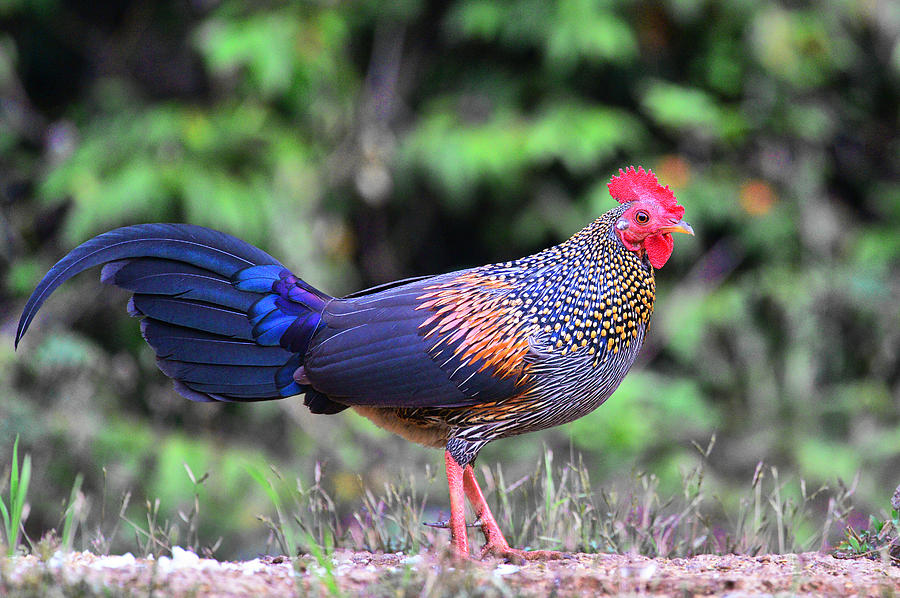Gray Jungle Fowl

Gallus Sonneratii
Unveiling the Mysteries of the Gray Jungle Fowl: Gallus sonneratii
In the heart of the dense jungles of South Asia, amidst the cacophony of wildlife, roams a creature of remarkable beauty and significance: the Gray Jungle Fowl (Gallus sonneratii). As a close relative of the domestic chicken and a symbol of the region’s rich biodiversity, this magnificent bird warrants exploration and appreciation.
Appearance and Distribution
The Gray Jungle Fowl, distinguished by its intricate plumage and vibrant hues, stands as a testament to the evolutionary artistry of nature. Its plumage varies from shades of gray and brown to iridescent blues and greens, with striking patterns adorning its feathers. Males, known as roosters, boast vibrant plumage and striking combs, while females, known as hens, exhibit more subdued colors.
Native to the dense forests and grasslands of South Asia, including India, Nepal, Bhutan, and parts of Southeast Asia, the Gray Jungle Fowl finds sanctuary amidst the lush vegetation and diverse ecosystems of the region. However, due to habitat loss and hunting pressures, its populations face challenges to their survival.
Behavior and Ecology
The Gray Jungle Fowl is a creature of both grace and resilience, navigating its habitat with agility and purpose. As omnivores, they forage for a diverse array of food, including seeds, insects, small mammals, and even reptiles. Their presence serves a vital role in ecosystem dynamics, contributing to seed dispersal and pest control.
During the breeding season, males engage in elaborate courtship displays, showcasing their vibrant plumage and vocal prowess to attract mates. These displays, characterized by flamboyant dances and distinctive calls, are a spectacle to behold and underscore the intricate social dynamics of the species.
Cultural Significance
Beyond its ecological role, the Gray Jungle Fowl holds profound cultural significance in the regions it inhabits. Revered in Hindu mythology as the mount of the goddess Saraswati, it symbolizes fertility, prosperity, and divine protection. Additionally, its domesticated descendant, the chicken, has played a central role in human societies for millennia, serving as a source of food, ritual sacrifice, and companionship.
Conservation Challenges and Efforts
Despite its cultural and ecological importance, the Gray Jungle Fowl faces numerous threats to its survival. Habitat destruction due to deforestation, agricultural expansion, and urbanization poses a significant risk to its populations. Furthermore, indiscriminate hunting and capture for the pet trade exacerbate these pressures, leading to population declines in many areas.
In response to these challenges, conservation initiatives have been implemented to protect the Gray Jungle Fowl and its habitat. These efforts include habitat restoration, community-based conservation programs, and the establishment of protected areas. Additionally, raising awareness about the importance of biodiversity conservation and sustainable resource management is crucial for ensuring the long-term survival of this iconic species.
Celebrating Nature’s Masterpiece
In the intricate tapestry of life, the Gray Jungle Fowl stands as a testament to the awe-inspiring diversity of the natural world. Its vibrant plumage, intricate behaviors, and cultural significance serve as a reminder of the interconnectedness of all living things and the importance of preserving biodiversity for future generations. So, the next time you venture into the jungles of South Asia, take a moment to appreciate the majestic beauty of the Gray Jungle Fowl, a true icon of the region’s wild heritage.
